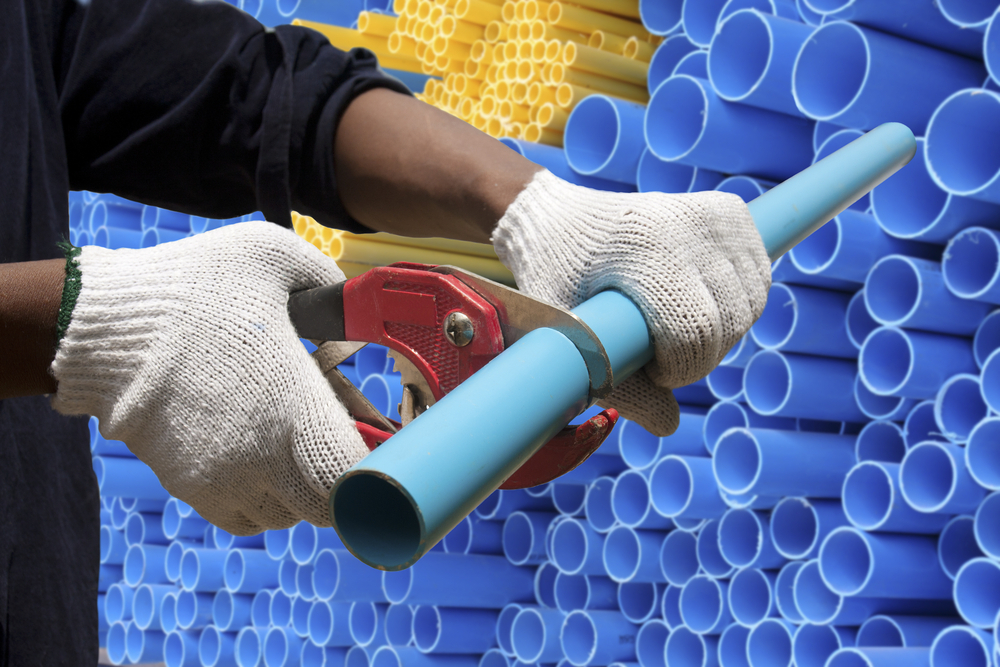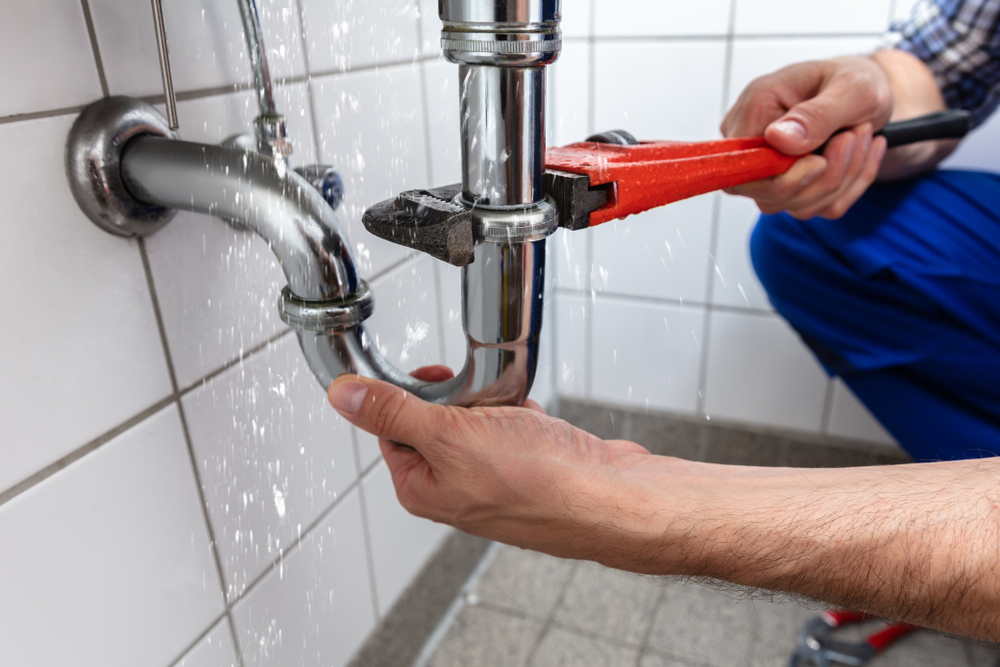A Comprehensive Guide to Choosing the Right Material for Your Next Plumbing Project
Plumbing projects, whether for residential renovations or commercial constructions, require careful consideration of various factors to ensure optimal performance and longevity. Among these factors, the choice of piping material stands out as a critical decision that can significantly impact the overall success of the project. In this comprehensive guide, we will delve into the intricacies of selecting the right piping material, exploring the options available, understanding their characteristics, and providing practical insights to help you make informed decisions tailored to your specific needs.
The importance of choosing the right piping material cannot be overstated. From delivering clean water to removing waste efficiently, the plumbing system serves as the lifeline of any building. The selection of piping material not only influences the system’s performance but also affects factors such as durability, maintenance requirements, and environmental sustainability.
In this guide, we will navigate through the maze of piping materials, examining their properties, advantages, and limitations. Whether you’re embarking on a residential renovation, a commercial construction project, or simply looking to upgrade your plumbing system, this guide will equip you with the knowledge needed to make sound decisions and achieve piping perfection.

Understanding Your Plumbing Needs
Before diving into the specifics of piping materials, it’s essential to gain a clear understanding of your plumbing needs. Consider the purpose of the plumbing system, the anticipated usage patterns, and the environmental conditions it will be subjected to. Factors such as temperature variations, pressure levels, and exposure to chemicals can significantly impact the choice of piping material.
For instance, a residential plumbing system serving a single-family home may have different requirements compared to a commercial building with multiple tenants. Similarly, a plumbing system in a cold climate will have different considerations than one in a hot, humid environment. By identifying these key parameters, you can narrow down your options and focus on materials that best align with your project requirements.
Exploring Different Piping Materials
The market offers a diverse range of piping materials, each with its own set of characteristics and suitability for various applications. Let’s take a closer look at some of the most common options:
- Copper: Renowned for its durability and resistance to corrosion, copper piping has been a staple in plumbing for decades. Its inherent antimicrobial properties make it ideal for delivering clean drinking water. However, copper piping can be relatively expensive and may require skilled labor for installation.
- PEX (Cross-linked Polyethylene): PEX piping has gained popularity in recent years due to its flexibility, ease of installation, and resistance to freezing. Its ability to expand and contract makes it less susceptible to burst pipes during temperature fluctuations. However, prolonged exposure to ultraviolet (UV) light can degrade PEX piping, limiting its use in outdoor applications.
- PVC (Polyvinyl Chloride): PVC piping is known for its affordability, lightweight construction, and resistance to corrosion and chemicals. It is commonly used for drainage and vent systems in both residential and commercial settings. However, PVC piping has a lower temperature tolerance, making it unsuitable for hot water applications.
- CPVC (Chlorinated Polyvinyl Chloride): CPVC piping shares many similarities with PVC but is treated with chlorine to enhance its temperature resistance. It is suitable for both hot and cold water systems and is commonly used in residential plumbing projects. CPVC piping offers a cost-effective solution with easy installation procedures.
- Stainless Steel: With its strength, corrosion resistance, and aesthetic appeal, stainless steel piping is a preferred choice for high-pressure and high-temperature applications. It is commonly used in commercial buildings, industrial facilities, and healthcare settings where durability and cleanliness are paramount. While stainless steel piping may have a higher upfront cost, its long-term benefits justify the investment.
- Galvanized Steel: Once a popular choice for plumbing, galvanized steel piping has become less common due to its susceptibility to corrosion and rust over time. It is still found in older buildings but is generally not recommended for new installations, especially in areas with aggressive water conditions.
Each piping material has its own unique characteristics, advantages, and limitations. When selecting a material for your plumbing project, it’s essential to consider factors such as durability, cost-effectiveness, ease of installation, and compatibility with existing infrastructure.

Factors to Consider When Choosing a Piping Material
When evaluating different piping materials, several factors should be taken into account to ensure the long-term success of the plumbing system:
- Durability and Longevity: Assess the expected lifespan of the piping material under the anticipated operating conditions. Consider factors such as resistance to corrosion, abrasion, and chemical degradation.
- Cost and Availability: Compare the upfront cost of the material, as well as its availability in your region. Factor in any additional costs associated with installation, maintenance, and repairs over the lifespan of the system.
- Ease of Installation and Maintenance: Evaluate the ease of installation procedures and any ongoing maintenance requirements associated with the piping material. Consider whether specialized tools or skills are needed for installation and whether the material is prone to clogging or scaling over time.
- Environmental Impact: Consider the environmental implications of the material, including its energy efficiency, recyclability, and overall ecological footprint. Choose materials that minimize waste generation, energy consumption, and greenhouse gas emissions throughout their lifecycle.
- Compatibility with Other Materials: Ensure that the chosen piping material is compatible with other components of the plumbing system, including fittings, valves, and fixtures. Incompatibility issues can lead to leaks, corrosion, and premature failure of the system.
By carefully weighing these factors, you can select a piping material that meets your project requirements while balancing considerations such as cost-effectiveness, performance, and sustainability.
Case Studies
To provide real-world insights into the selection of piping materials, let’s examine a few case studies illustrating their application in different scenarios:
- Residential Renovation: A homeowner embarks on a kitchen renovation project and decides to upgrade the plumbing system with PEX piping. The flexibility and ease of installation of PEX piping make it an ideal choice for retrofitting existing infrastructure. The project is completed within budget and on schedule, with the new plumbing system providing reliable performance and peace of mind for the homeowner.
- Commercial Construction: A developer undertakes the construction of a high-rise office building and opts for stainless steel piping throughout the HVAC system. The superior corrosion resistance and durability of stainless steel make it well-suited for the demanding conditions of a commercial building. Despite the higher initial cost, the long-term benefits of stainless steel piping, including reduced piping maintenance and repair expenses, justify the investment.
These case studies highlight the importance of selecting the right piping material based on the specific requirements and constraints of each project. Whether it’s a residential renovation or a large-scale commercial construction, choosing the appropriate material is essential for achieving optimal performance and longevity.
Key Considerations for Specific Plumbing Projects
Depending on the nature of your plumbing project, certain considerations may take precedence in the selection of piping materials:
- Residential vs. Commercial Plumbing: Residential projects often prioritize cost-effectiveness, ease of installation, and aesthetic considerations, while commercial projects may require materials capable of withstanding higher pressures, temperatures, and usage levels.
- New Construction vs. Renovation: New construction projects offer greater flexibility in material selection, whereas renovations may require compatibility with existing infrastructure and architectural constraints.
- Hot Water vs. Cold Water Systems: Materials such as CPVC and stainless steel are well-suited for hot water applications, whereas PEX and PVC are commonly used for cold water systems. Consider the temperature ratings and pressure capacities of each material when selecting for specific applications.
- Exterior vs. Interior Piping: Outdoor piping may be exposed to harsh environmental conditions such as temperature extremes, UV radiation, and soil corrosion. Choose materials with enhanced weather resistance and durability for exterior applications, such as PVC or stainless steel.

Choosing the Right Material for Your Project
In conclusion, selecting the right piping material is a crucial step in ensuring the success and longevity of your plumbing project. By carefully considering factors such as durability, cost-effectiveness, ease of installation, and environmental sustainability, you can make informed decisions that align with your project goals and constraints.
To assist you in the decision-making process, here are some key steps to follow:
- Assess Your Plumbing Needs: Identify the specific requirements of your plumbing project, including usage patterns, environmental conditions, and budget constraints.
- Research Piping Materials: Explore the characteristics, advantages, and limitations of different piping materials available in the market.
- Evaluate Key Factors: Consider factors such as durability, cost, ease of installation, maintenance requirements, and environmental impact when comparing piping materials.
- Consult with Professionals: Seek advice from a qualified plumber, engineers, or building contractors to gain insights tailored to your project requirements.
- Make an Informed Decision: Based on your research and consultation, choose the piping material that best meets your project needs while balancing considerations such as performance, longevity, and cost-effectiveness.
Remember that the choice of piping material is not a one-size-fits-all decision and may vary depending on the specific requirements of each project. By taking a systematic approach and considering all relevant factors, you can ensure the success of your plumbing service and enjoy the benefits of a reliable, efficient, and sustainable plumbing system for years to come.
Conclusion
In the realm of plumbing projects, the choice of piping material plays a pivotal role in determining the system’s performance, durability, and overall success. Whether you’re renovating your home, constructing a new building, or simply upgrading your plumbing system, selecting the right material is essential for achieving piping perfection.
In this guide, we’ve explored the various options available, discussed their characteristics, advantages, and limitations, and provided practical insights to help you make informed decisions. By understanding your plumbing needs, evaluating key factors, and considering the specifics of your project, you can choose a piping material that meets your requirements and ensures the long-term reliability of your plumbing system.
As you embark on your next plumbing project, remember to approach the decision-making process thoughtfully and consult with professionals as needed. With careful planning, diligent research, and informed decision-making, you can achieve piping perfection and enjoy the benefits of a well-designed and meticulously executed plumbing system for years to come.
Plumbing Services CA
https://maps.app.goo.gl/31Yt4rhDrainzNJ4A
(279) 203-0765
https://plumbingservicesca.com/
